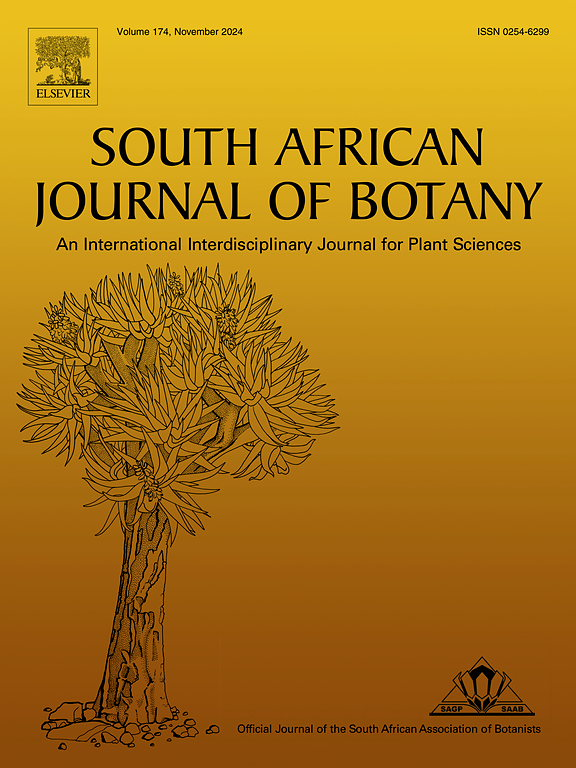In vitro cytotoxic, genotoxic, and multi-parameter hepatotoxic evaluation of selected South African medicinal plant extracts
IF 2.7
3区 生物学
Q2 PLANT SCIENCES
引用次数: 0
Abstract
Many consumers assume the safety of medicinal plants, and consequently use these remedies for treating various conditions, without knowledge of their potential toxicity. Research assessing the safety of South African medicinal plants is scarce. This study was therefore aimed at evaluating the cytotoxicity, genotoxicity and in vitro multi-parameter hepatotoxicity of twenty South African indigenous medicinal plant extracts, which were selected based on their significance, popularity and commercial use. Sixty extracts (water, methanol and hexane) of 50, 100 and 200 μg/mL were prepared from the twenty selected species using the plant parts used traditionally. These were screened for cytotoxicity towards Vero and C3A cells. The extracts were tested for potential genotoxicity using the micronucleus assay in Vero cells. The hepatotoxicity of these extracts was assessed using a multi-parameter assay using C3A cells. Mitochondrial membrane potential, mitochondrial mass, oxidative stress, lysosomal content and lipid accumulation were used as indicators to assess potential hepatotoxicity. In the micronucleus assay, most of the hexane and methanol extracts were found to be toxic towards Vero cells, while the majority of the water extracts were non-toxic, as confirmed by Hoechst 33342-PI dual staining. The methanol extracts of Athrixia phylicoides and Pelargonium sidoides were toxic to Vero cells at all three concentrations tested. Although some hexane and methanol extracts induced a degree of cytotoxicity at the highest concentrations, only the methanol extracts of A. phylicoides and P. sidoides exhibited possible genotoxic potential at all three concentrations. In the multi-parameter hepatotoxicity assay, the aqueous extracts of Lippia javanica, Mentha longifolia, Merwilla plumbea, Mesembryanthemum tortuosum, P. sidoides, and Xysmalobium undulatum were found to cause oxidative stress. The majority of extracts induced mitotoxicity, which is linked to lipid toxicity; this was particularly prominent in the case of all three P. sidoides extracts. The organic extracts of Crinum macowanii and Melianthus major, as well as the water extract of X. undulatum, caused lysosomal dysfunction. Almost all of the water, methanol and hexane extracts exhibited a degree of cytotoxicity towards C3A cells. Mitotoxicity and lipid accumulation were amongst the hepatotoxic mechanisms displayed by aqueous extracts. Some caution is recommended when using some of these plant species, as a degree of toxicity was observed.
求助全文
约1分钟内获得全文
求助全文
来源期刊

South African Journal of Botany
生物-植物科学
CiteScore
5.20
自引率
9.70%
发文量
709
审稿时长
61 days
期刊介绍:
The South African Journal of Botany publishes original papers that deal with the classification, biodiversity, morphology, physiology, molecular biology, ecology, biotechnology, ethnobotany and other botanically related aspects of species that are of importance to southern Africa. Manuscripts dealing with significant new findings on other species of the world and general botanical principles will also be considered and are encouraged.
 求助内容:
求助内容: 应助结果提醒方式:
应助结果提醒方式:


